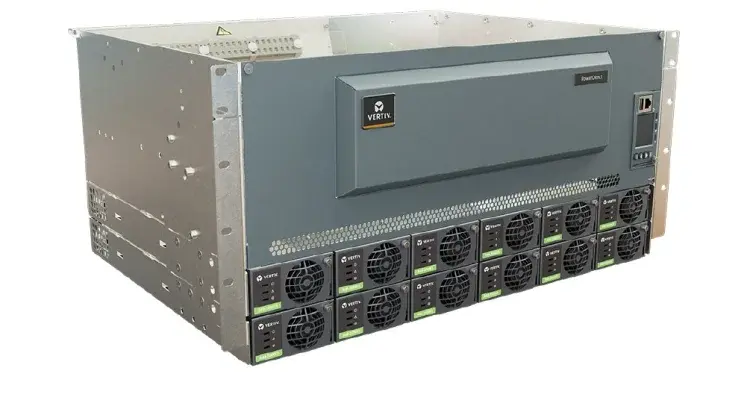National broadcasting shows such as SATIS continue to survive, not that the exhibition organisers are having an easy time.p>National broadcasting shows such as SATIS continue to survive, not that the exhibition organisers are having an easy time.
SATIS has a long history of attracting the French video production community and recently incorporated an audio event (SIEL) to appeal to radio and sound-recording folk. Aware that several French distributors had pulled out of this year's show, I attended this year's show (October 20-22, Porte de Versailles) with minimal expectations and was presented with a thin Guide de Visite running to a mere 20 A5 pages. The show itself nevertheless proved respectably large and well attended with nearly 280 companies occupying stands in Hall 7.3 of the Porte de Versailles exhibition centre. Instead of a paragraph of address and production description, each exhibitor was allocated just a one-line entry in the guide with its website address as the key item. In this Internet-oriented age, that is arguably quite sufficient.
Sony may have missed IBC but was highly visible at SATIS with two respectably-large adjacent stands. One of these included a demonstration of 3D video though not including the prototype single-lens stereoscopic camera exhibited at CEATEC Japan two weeks earlier. The later device is so ingenious (if it works) that it nevertheless merits a brief description here: Figure 1 shows the concept which is intended to overcome the problem of trying to use matched pairs of zoom lenses to capturing 3D. Sony proposes focusing stereo-paired left/right imagers through a single zoom lens in a style resembling one pair of human eyes staring simultaneously through a single telecope lens. Perhaps I am missing something. The description in the news section of Sony's corporate website (www.sony.net) includes another strange claim: 'When polarised glasses are not used, viewers will still be able to see natural 2D images as the disparity of the images for left and right eyes is within the range that human eyes can recognise as a blur.' Does this mean Sony is using closer sensor pairing than the standard human eye distance?
Other major exhibitors attended under their own flag included Blackmagic, Canon, Digigram, Fujinon, JVC, Miranda, Panasonic, Quantel, Snell, and Tektronix. Equipment from companies such as Calrec, NTP and Studer was also on display, via their distributors, though not mentioned in the catalogue - a missed opportunity both for the companies concerned and the exhibition organiser.
Innovative ideas
An ingenious concept that very soon came to my attention was a roped-off parade of products chosen for a SIEL & SATIS trophy. The awards game is quite a fun one and useful as its brings innovative new kit to the forefront. Where individual magazines, trade associations and exhibition organisers traditionally bestow half a dozen citations at a major show, SIEL & SATIS opted for no less than 59. The recipients were selected by an 11-strong panel of independent advisors. They made a good choice, including Atempo's Digital Archive, JVC's GY-HM100 solid-state HD camcorder, Sound 4's IP-based audio networking system, Sony's BRS-200 vision mixer, Projection Design's F10 AS3D stereoscopic projector and Visiofly's EVO HD drone camera. These and the rest were paraded in a reasonably secure section of the exhibit hall alongside descriptive placards.
JVC merited a different kind of award for the 2D to 3D processor that it first exhibited at NAB. I saw the NAB demo but missed the subsequent IBC showing so was pleased to find the processor on display once again at SATIS beneath a large switch-polarised LCD with some of the best 3D moving video I have ever seen. But that was from a real 3D source. The 2D to 3D processor was actually connected to a much smaller screen and sourcing its 2D signal directly from a camera. The effect was like watching a distorting mirror, in other words not very good.
Christie addressed the issue of bulb lifetime in video projectors. The RPMSP-LED01 uses an RGD triad of LEDs for its light source, modulated by a 1,400 x 1,050 Texas DLP chip as the basis of a rear-screen projection module available in 50 inch (470 cd per square metre brightness) and 67 inch (260 cd per square metre) sizes. The lightsource is rated at 60,000 hours, far beyond traditional filament-based high-power bulbs.
Blackmagic Design showed a low-cost alternative to rasterising test and measurement displays for post-production applications. The UltraScope is a combination of PCI Express card and software designed to work in a standard PC coupled to a 24 inch monitor for display. It allows simultaneous display of six waveform views chosen from RGB/YUV parade display, composite waveform, vector, histogram, eight-channel audio metering, stereo audio scope or picture view. Any of the above can alternatively be selected for full-screen viewing. The UltraScope auto detects between SD, HD and 3 Gb/s HD-SDI video standards and between regular SDI and optical fibre SDI inputs. Price is US$695 or 535 euro.
NTP's DAD AX24 eight-channel audio converter was demonstrated on the stand of its French distributor, Areitec. The AX24 converter is intended for use with high-end digital audio workstations where the highest possible recording quality is required. It supports 44.1 up to 192 kHz sampling rates as well as the 352.8 kHz DXD sampling rate used for recording and editing Super Audio CDs. An optional high-quality microphone preamplifier is claimed to make the AX24 the world's most transparent A/D converter microphone preamplifier.
Returning to the 3D theme, Projection Design's F10 AS3D video projector enables full 3D stereoscopic visualisation from a small single lens chassis using a 120Hz refresh rate. It is fully 1080p compatible.
Visiofly is a France-based company specialising in remote-controllable flying cameras. It offers a selection of lightweight cameras (including 1080p HD) plus miniature airships and propeller-driven monoplanes to get them into the air. Examples of the output can be seen at www.visiofly-store.com.
Newtek exhibited the latest version of its TriCaster which can simultaneously produce and stream or broadcast a network-style production. A single operator or small team can create a live show while switching between up to six cameras with two recorders, multi-channel effects and NewTek’s LiveSet virtual sets.
Vixid's VJX16-4 vision mixer allows up to four sources to be seen on screen at the same time (A+B+C+D) and simultaneously mixed together, without latency or interruption. Up to 16 video sources can be connected (four inputs per fader). The mixer also has three independent video outputs.
Snell promoted its recently-introduced the Kahuna CF-plus SD/HD switcher. Housed in a single 6 U frame, the Kahuna CF+ is a 2.5-mix/effects multiformat production production switcher with the same specifications as larger Kahuna systems. Features include a 24-crosspoint control surface, 40 multiformat inputs and 32 outputs, four channels of 3-D DVE, an eight-channel clipstore, 10 resize engines, 10 full effects keyers including chroma key, enhanced effects memories, and timeline and macro control.
Tektronix announced the VQNet video service assurance manager and IPM400A network probe, both designed to help cable, telco and broadcast operators detect and resolve problems across their IP networks. Tektronix also announced a DVB-S2 interface for its MTM400A transport stream monitor.
Adder's new AdderLink Infinity allows video, audio and USB sources from computers located anywhere on a network to be presented to a single receiver or broadcast to other receivers. Control of USB devices can be passed to anyone else on the network. The units come in two types, transmitter and receivers, which connect to the screen, speakers and USB devices.
Roland promoted its LVS-800 eight input video production mixer. This incorporates eight video channels and a downstream keyer enabling graphic and title overlays. Features include composite, S-Video, and PC/RGB inputs with scan converters, two independent outputs including A/B mix and programme out for multiscreen applications, monitor output for all channels, and panel presets for instant recall of mixer parameters.
Nagra exhibited its LB solid-state audio recorder with integral editor and communication.
This includes instant start-up, single-button record activation, take directory and titling, USB 2.0 ports, phantom powering, linear mono/stereo and compressed recording and an on-board graphic audio editor. It also has an Ethernet port and Bluetooth communication.
Miranda highlit the new capabilities of its iControl Edge automated set-top box signal monitoring system, including HD/SD probing, macro-block, lip-sync, and content mismatch detection. When a video or audio error is detected, alarms are automatically triggered and logged, and the signal is recorded. Operators can pinpoint, troubleshoot and repair faults, reducing the need for remote service calls.
Workshops
The exhibition was supported by an impressively large number of workshop demonstrations areas, many of them very well attended and most explaining the virtues of Mac-based and PC-based post-production software. Few software manufacturers now bother to include printed documentation with their products, opting instead for PDFs. There is even a trend towards leaving off even the PDFs which should be good news for the book publishing trade.
David Kirk






















